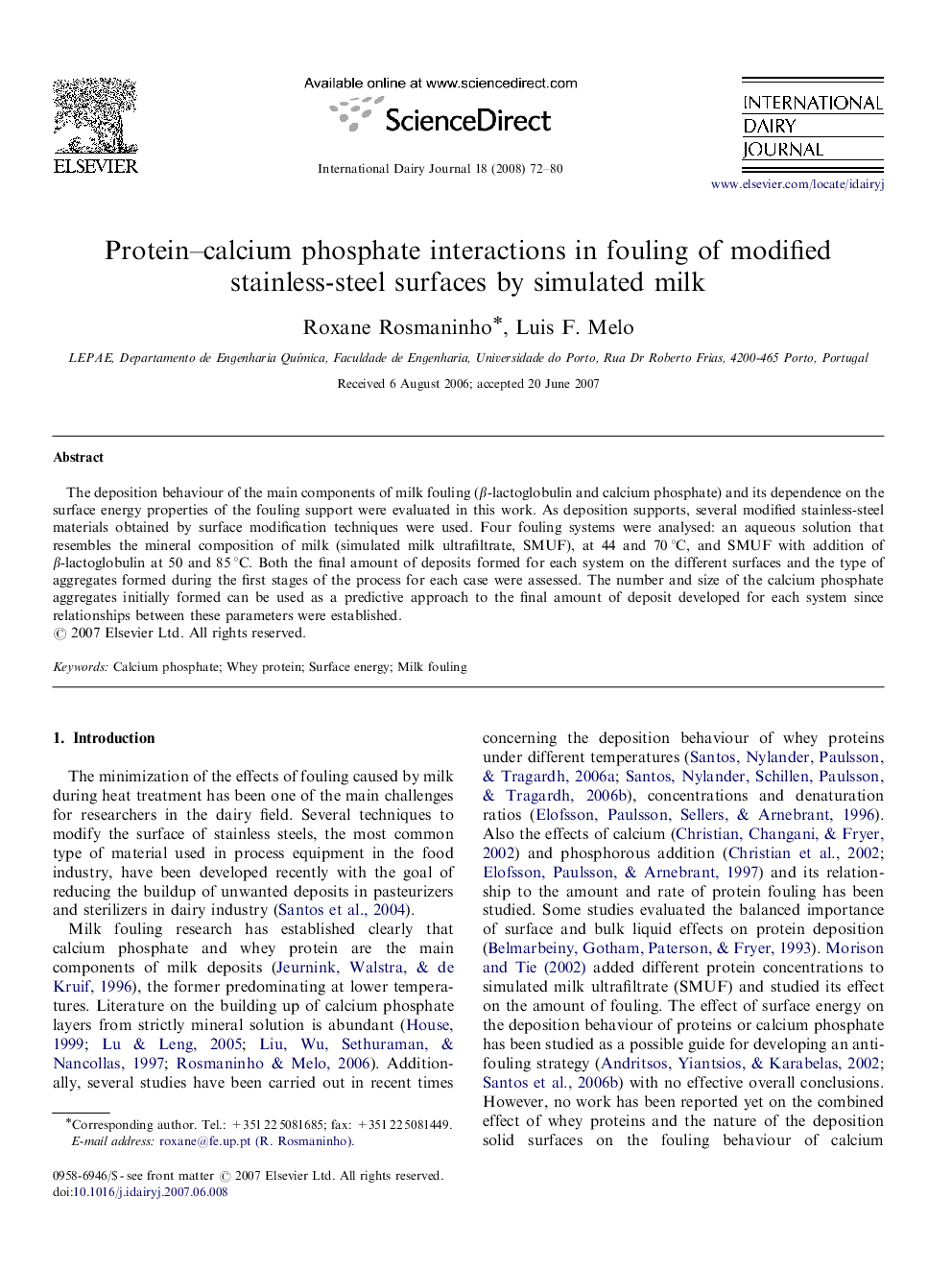| Article ID | Journal | Published Year | Pages | File Type |
|---|---|---|---|---|
| 2435546 | International Dairy Journal | 2008 | 9 Pages |
The deposition behaviour of the main components of milk fouling (β-lactoglobulin and calcium phosphate) and its dependence on the surface energy properties of the fouling support were evaluated in this work. As deposition supports, several modified stainless-steel materials obtained by surface modification techniques were used. Four fouling systems were analysed: an aqueous solution that resembles the mineral composition of milk (simulated milk ultrafiltrate, SMUF), at 44 and 70 °C, and SMUF with addition of β-lactoglobulin at 50 and 85 °C. Both the final amount of deposits formed for each system on the different surfaces and the type of aggregates formed during the first stages of the process for each case were assessed. The number and size of the calcium phosphate aggregates initially formed can be used as a predictive approach to the final amount of deposit developed for each system since relationships between these parameters were established.
